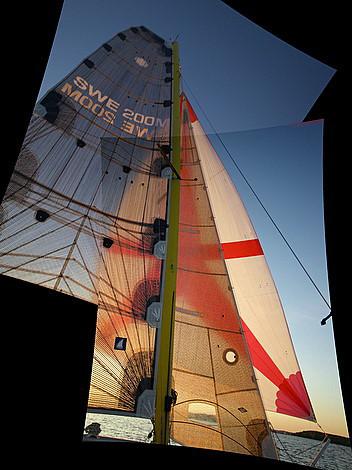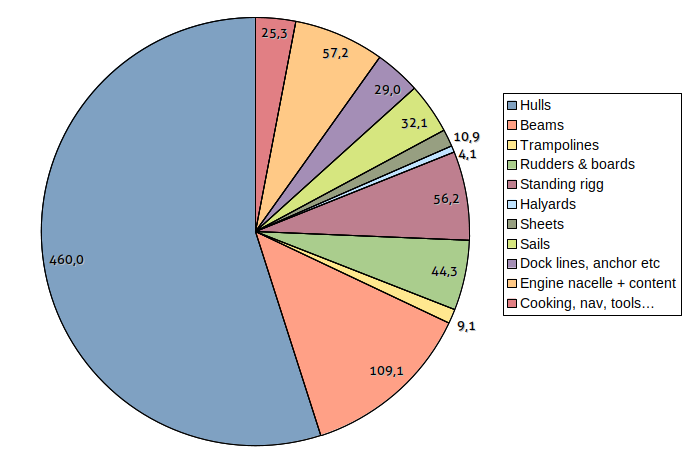Tech challenges

Loads
Light yet capable of generating high loads is the governing engineering reality of multihulls with any performance ambitions. Scarlattikvarten weighs some 800 kg including all gear. Thanks to her wide stance the righting moment is some 35 kNm with three of us on the windward hull. This righting moment results in a static shroud tension of 12+ kN and a corresponding mast compression of 24+ kN (with guesstimated contributions from sheets and halyards) bearing down on the main cross beam. Add to this the wracking loads on the cross-beams and hulls generated when sailing diagonally through steep seas. And then you have the loads generated by the deep daggerboards…
Make it light and strong
So, what do we do about this? We could add hefty pieces of stainless steel and beef up laminates but that would generate higher loads still since the boat would gain weight. Hence, we do not do that. Saving weight is the way to go to make it stick together. Lower weight means easier driven boat needing less amount of sail. Less sail area and less righting moment leads to lower loads in all components of the boat. Out goes as many of the 'orthodox' metal fittings as possible. My Kevlar 'chain plates' weigh only 50 g a piece yet are twice as strong as the shrouds. It really pays off to engineer the structure as thoroughly as possible to avoid excess material.
Aerodynamic drag and controls
Going to windward doing 10–12 knots in 15 knots of wind means the air drag is quite a lot more important than on monohulls or slow multihulls. And you want sail controls that can handle large loads, sail controls that are easy to understand and work in a spray-infested environment when you must act NOW to avoid capsize…
Fast multihulls are not only interesting, fun, and rewarding to sail but they are also quite interesting engineering and building challenges. This helps me through our long, dark Scandinavian winters.
Weights

All kilograms.
Disclaimer: The weight of the hulls is the remainder when all the rest has been subtracted from the all-up weight.